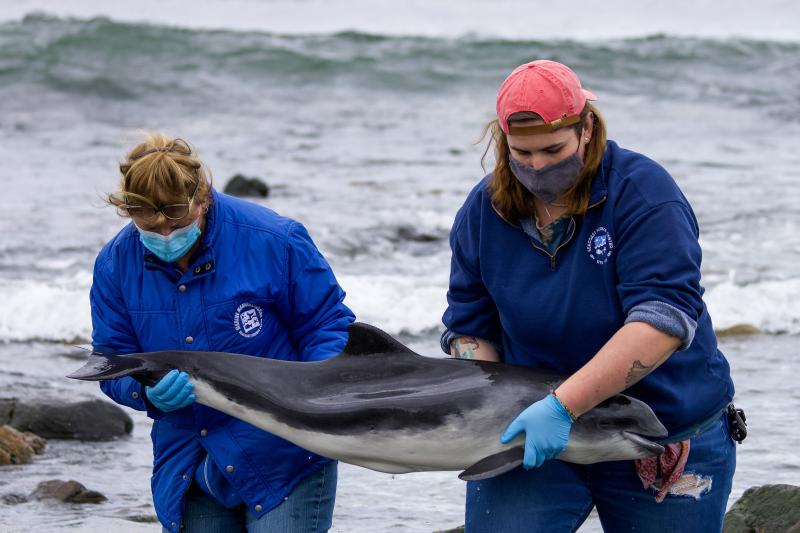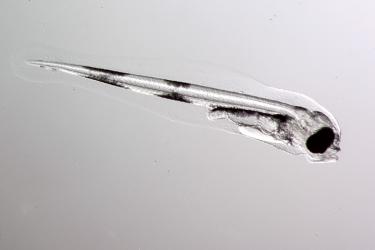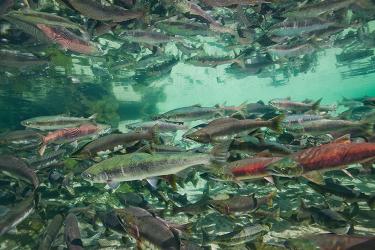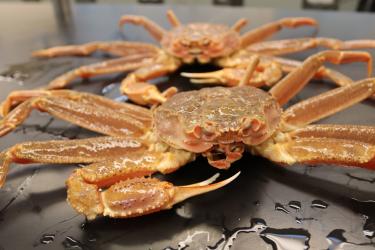NOAA Fisheries released the 2020 and 2021 Combined Report of Marine Mammal Strandings in the United States. This is the fourth installment in a series of annual stranding reports compiled by the Marine Mammal Health and Stranding Response Program. It includes information on confirmed cetacean (whale, dolphin, and porpoise) and pinniped (seal and sea lion) strandings in the United States. In 2020, there were 5,400 confirmed strandings; in 2021, there were 5,524.
The number of confirmed strandings in these years is lower than the 14-year (2006–2019) average. However, 2020 and 2021 represent a period that was also impacted by the coronavirus COVID-19 pandemic in the human population. It is unclear whether the lower counts are due to fewer stranded animals, fewer observations/reports by the public due to limited access to beaches or other activities, and/or capacity by the Stranding Network to respond. Overviews for 2017, 2018, and 2019 are also available.
What Is a Stranding?
Marine mammals are important sentinels of ocean health and climate change. Responding to stranding events helps NOAA Fisheries monitor health and environmental trends that may impact humans. A marine mammal is considered stranded if it meets one of the following criteria:
- Dead, whether on the beach or floating in the water
- Alive, on a beach, but unable to return to the water
- Alive, on a beach, and in need of apparent medical attention
- Alive, in the water, and unable to return to its natural habitat without assistance
Why Do Marine Mammals Strand?
Examinations and necropsies (animal autopsies) show common causes of strandings include one or a combination of the following:
- Disease
- Harmful algal blooms and associated biotoxins
- Injuries due to vessel collisions, entanglements, or other human interactions such as gunshots
- Malnutrition
- Marine debris (entanglement or ingestion)
- Pollution exposure
Some strandings may also be related to unusual weather or oceanographic events. In many cases the cause(s) of stranding cannot be determined, especially when carcasses are found in advanced states of decomposition.
How to Report a Stranded Marine Mammal
If you come across a stranded marine mammal, remain a safe and legal distance from the animal. Report the animal to your regional 24/7 hotline. The most important information to collect is:
- Date
- Location of stranding (including latitude and longitude)
- Number of animals
- Whether the animal is alive or dead
- Species, if known
Photos or videos (from a safe and legal distance) can also provide valuable information to Network responders. You can also download the Dolphin and Whale 911 Stranding App in the Apple Store to help report a stranding.
Leave Stranding Response to Trained Personnel
Every marine mammal stranding event is unique and poses different challenges. Only trained and permitted responders should approach or pick up a stranded marine mammal. Organized stranding response by highly trained and authorized personnel is best for the well-being of the stranded animals, and helps manage risks to public health and safety. There are more than 120 organizations in the U.S. Marine Mammal Stranding Response Network. They provide first response capabilities for cetaceans and pinnipeds (except walruses) that are sick, injured, in distress, out of habitat, or dead. Live animals that are rescued and rehabilitated provide valuable information on the biology, physiology, and health of those species. The lessons learned from relatively abundant species can improve conservation of threatened or endangered species. Data collected from live or dead stranded animals can also provide important information on:
- Human impacts on marine mammals such as interactions between marine mammals and fisheries, vessels, marine debris
- Effects of pollution (oil spills, contaminants, and heavy metals)
- Supporting law enforcement investigations
We appreciate the valuable contributions of the National Marine Mammal Stranding Network, particularly throughout the COVID-19 pandemic.





